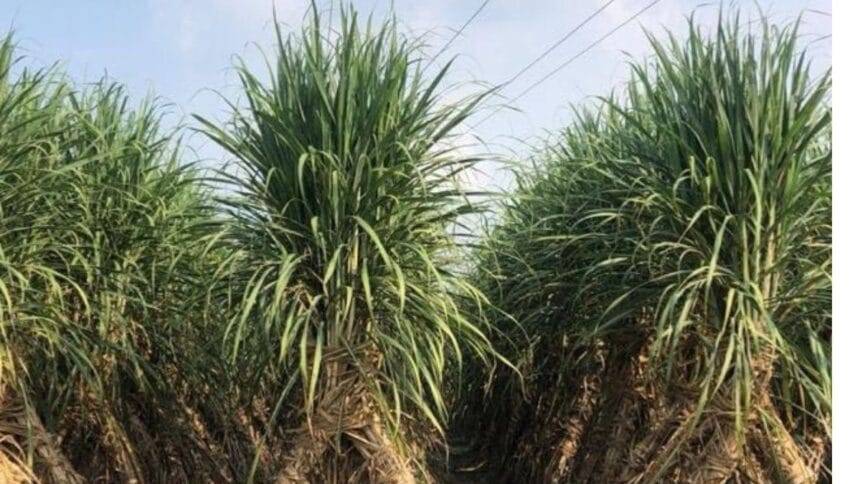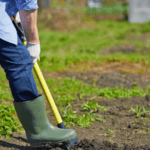Main Points In Hindi (मुख्य बातें – हिंदी में)
-
शर्करा का महत्व: शर्करा, भारत की एक महत्वपूर्ण कृषि फसल है, जो किसानों की अर्थव्यवस्था की आस है। अब यह केवल चीनी उत्पादन तक सीमित नहीं है, बल्कि ऊर्जा क्षेत्र में इथेनॉल उत्पादन में भी महत्वपूर्ण भूमिका निभा रही है।
-
नए तकनीकों का उपयोग: किसानों ने नए नर्सरी पद्धतियों और तकनीकों को अपनाया है, जिससे बीज की खपत में 75% तक की कमी आई है। इससे उत्पादन की लागत कम होती है और कार्य की गुणवत्ता में सुधार होता है।
-
बीज की खपत में कमी: पारंपरिक विधियों की तुलना में नए विधियों में बीज की खपत केवल 1-2 क्विंटल प्रति एकड़ होती है, जबकि पारंपरिक विधियों में 25-30 क्विंटल की आवश्यकता होती थी।
-
बड-चिप तकनीक: इस विधि में बड्स को फंगिसाइड के साथ उपचारित करके प्लास्टिक ट्रे में रोपा जाता है, जिससे बीज की खपत 90% तक कम होती है।
- आर्थिक लाभ: नए शर्करा पौधों की तकनीकों का उपयोग करने से किसानों को उच्चतम उत्पादकता और कम लागत पर ज्यादा लाभ प्राप्त होता है।
Main Points In English(मुख्य बातें – अंग्रेज़ी में)
-
Economic Importance of Sugarcane: Sugarcane is a major agricultural crop in India, crucial for the farmers’ economy and increasingly significant in ethanol production, enhancing its role in the energy sector beyond just sugar production.
-
Advancements in Farming Techniques: New technologies have revolutionized sugarcane cultivation, requiring less seed and labor. Methods like nursery sapling preparation and transplantation have reduced seed usage from 25-30 quintals per acre in traditional methods to just 1-2 quintals, significantly cutting costs.
-
Innovative Cultivation Methods: Techniques such as Single Eye Sets (STP) and Bud-Chip technology allow for lower seed consumption (7-10 quintals and 80-100 kg, respectively) and higher success rates (95-99%). These methods optimize resource use and enable the intercropping of other crops for additional income.
-
Higher Yield and Profitability: Modern sowing methods yield better produce in less time and at a lower cost, making sugarcane farming more profitable. Farmers can achieve up to 90% yield with innovative practices compared to traditional approaches.
- Sustainability and Efficiency: Embracing new technologies in sugarcane farming not only increases productivity but also aligns with sustainable practices, as they require fewer inputs and help farmers maximize their profits while ensuring better resource management.
Complete News In Hindi(पूरी खबर – हिंदी में)


गन्ना भारत के प्रमुख कृषि फसलों में से एक है, जिसे वाणिज्यिक फसल माना जाता है। यह किसानों की अर्थव्यवस्था की रीढ़ है। आजकल, गन्ना सिर्फ चीनी उत्पादन तक ही सीमित नहीं है, बल्कि यह इथेनॉल उत्पादन में भी महत्वपूर्ण भूमिका निभा रहा है, जिससे यह ऊर्जा क्षेत्र में महत्वपूर्ण हो गया है। इसके अलावा, गन्ने से कई उप-उत्पाद भी बनते हैं, जिससे यह फसल किसानों के लिए एक एटीएम की तरह साबित हो रही है। गन्ने की बुवाई और उत्पादन में सुधार के लिए नई तकनीकें विकसित की गई हैं। पहले, बड़े गन्ने के टुकड़ों का उपयोग बीज के रूप में किया जाता था, लेकिन अब बीज बचाने और स्वस्थ पौधों की तकनीक उपलब्ध है। इन तकनीकों में गन्ने को सीधे नहीं बोया जाता, बल्कि पहले गन्ने के नर्सरी पौधे तैयार किए जाते हैं और फिर उन्हें मुख्य खेत में ट्रांसप्लांट किया जाता है।
गन्ने के पौधों के बीच सही दूरी बनाए रखकर इंटरक्रॉपिंग फसलों को भी उगाया जा सकता है, जिससे अतिरिक्त आय का स्रोत बनता है। गन्ने की नर्सरी तैयार करने और बुवाई के ये तरीके पारंपरिक तरीकों की तुलना में अधिक फायदेमंद साबित हो रहे हैं। जहां पारंपरिक विधि में प्रति एकड़ 25 से 30 क्विंटल बीज की जरूरत होती थी, वहीं नई तकनीकों में केवल एक चौथाई बीज की आवश्यकता है।
पुरानी तकनीकों में ज्यादा लागत
आज, किसान आधुनिक तकनीकों का उपयोग करके कम समय और लागत में बेहतर उपज प्राप्त कर सकते हैं। गन्ने की बुवाई में नई तकनीकों के विकास से खेती पारंपरिक विधियों की तुलना में अधिक लाभकारी हो रही है। पारंपरिक तरीकों से गन्ना बोने में अधिक समय और लागत लगती है, और किसानों को बीज की सेटिंग के संबंध में कई समस्याओं का सामना करना पड़ता था। जहां पहले एक एकड़ में 25 से 30 क्विंटल बीज की जरूरत होती थी, वहीं अब गन्ना 1 से 2 क्विंटल बीज के साथ बोया जा सकता है। इन नई तकनीकों से गन्ना कटाई की पूरी गारंटी है। गन्ने की आधुनिक बुवाई तकनीकों को अपनाकर, किसान कम समय और लागत में अधिक उपज प्राप्त कर सकते हैं, जिससे गन्ने की खेती और लाभकारी हो जाती है।
इसके अलावा पढ़ें: किसान 3 अक्टूबर को अपने मुद्दों के लिए दो घंटे का रेल रोको प्रदर्शन करेंगे, जिससे यात्रियों की समस्याएं बढ़ेंगी।
गन्ना (STP) तकनीक से एक चौथाई बीज की बचत
इस विधि में गन्ने के एक आंख वाले टुकड़े (एक आंख के साथ टुकड़े) का उपयोग किया जाता है। गन्ने के पौधे की नर्सरी 50-55 दिनों के लिए तैयार की जाती है, फिर उन्हें ट्रांसप्लांट किया जाता है। STP तकनीक में, प्रति एकड़ बीज की खपत 7 से 10 क्विंटल होती है, जो पारंपरिक विधि की तुलना में बीज की लागत को 60-70 प्रतिशत कम करती है। यदि नर्सरी के पौधे को पॉलिबैग में उगाया जाए, तो खाद, मिट्टी और रेत का अनुपात 1:1:1 होना चाहिए। इस विधि की सफलता दर 95-99 प्रतिशत होती है, क्योंकि जड़ों को कोई क्षति नहीं होती। इस विधि में गन्ना मुख्य खेत में 90 सेमी के बीच की दूरी पर और 30 सेमी के बीच में बोया जाता है।
बड-चिप तकनीक से गन्ने की बेहतर उपज
बड-चिप तकनीक में गन्ने की नर्सरी तैयार की जाती है और पौधों को लगाया जाता है। इस विधि में, पारंपरिक विधि की तुलना में गन्ने के बीजों की खपत बहुत कम होती है। कलियों का फंगीसाइड से उपचार किया जाता है और उन्हें वर्मीकॉम्पोस्ट या कोको-पिट से भरे बक्सों में बोया जाता है। जब पौधे 4-5 सप्ताह के हो जाते हैं, उन्हें मुख्य खेत में ट्रांसप्लांट किया जाता है। इस विधि में 80-100 किलोग्राम बीज की आवश्यकता होती है, जबकि पारंपरिक विधि में 25-30 क्विंटल बीज की जरूरत होती है। बड-चिप तकनीक से बीज की लागत में 90 प्रतिशत की बचत होती है। गन्ने की पंक्तियों के बीच दालें, तिलहनों और नकद फसलों को उगाकर अतिरिक्त लाभ प्राप्त किया जा सकता है। रबी और खरीफ फसलों की कटाई के बाद, गन्ने की नर्सरी तकनीक का उपयोग करके गन्ने के पौधे तैयार कर समय पर मुख्य गन्ने के खेत में लगाया जा सकता है।
बेहतर संग्रहण के लिए ये सुझाव अपनाएं
अधिकतर किसान केवल 2 आंख वाले गन्ने के टुकड़ों का उपयोग बुवाई के लिए करते हैं। गन्ने के विशेषज्ञों का कहना है कि इससे किसानों को गन्ने की अच्छी फसल मिलती है। खेत तैयार करने के बाद, सभी किसान खेत में नाले बनाते हैं और फिर गन्ना उगाने के बाद तुरंत नाले को पानी से भर देते हैं। कुछ किसान पहले नाले को भरकर फिर गन्ने के टुकड़ों को उसमें अपने पैरों या हाथों से दबाते हैं। इस तरह गन्ने की बुवाई करने पर किसानों को 80 से 90 प्रतिशत उपज मिलती है। नई गन्ने की तकनीकें पारंपरिक विधियों की तुलना में उच्च उत्पादकता और कम लागत में बेहतर समाधान प्रदान करती हैं। इन तकनीकों के माध्यम से, किसान अधिक लाभ कमा सकते हैं और गन्ने की खेती को सफल बना सकते हैं।
इसके अलावा पढ़ें: किसान की किस्मत किवी खेती से चमक रही है, इस तरह वे एक साल में 15 लाख रुपये कमा रहे हैं।
Complete News In English(पूरी खबर – अंग्रेज़ी में)
Sugarcane is one of the major agricultural crops of India, which is known as a commercial crop. This is the backbone of the farmers’ economy. In today’s time, sugarcane is no longer limited to sugar production only. Its importance has also increased in ethanol production, due to which it is playing an important role in the energy sector. Apart from this, many by-products are also produced from sugarcane, due to which this crop is proving to be like an ATM for the farmers. New technologies have been developed to improve the sowing and production of sugarcane. Earlier, large pieces of sugarcane were used as seed, but now seed saving and healthy seedling techniques are available. In these techniques, sugarcane is not sown directly but now nursery saplings of sugarcane are prepared and transplanted in the main field.
Inter-cropping crops can also be planted by maintaining proper distance between the plants, which becomes a source of additional income. These methods of preparing sugarcane nursery and planting are proving to be more beneficial than traditional methods. While in the traditional method 25 to 30 quintals of seeds were required per acre, in the new techniques only one fourth of the seeds are required.
Old techniques of sugarcane sowing cost more
Today, farmers can produce better produce in less time and cost by using modern technologies. New technologies are being developed in sugarcane sowing, due to which farming is becoming more profitable as compared to traditional methods. Sowing of sugarcane in traditional methods took more time and cost and farmers had to face many problems regarding seed setting. Where earlier 25 to 30 quintals of seeds per acre were required, now sugarcane can be sown with 1 to 2 quintals of seeds. In these new technologies, there is complete guarantee of sugarcane harvesting. By adopting modern sowing methods of sugarcane, farmers can get more yield in less time and cost, making sugarcane cultivation more profitable.
Also read: Farmers will hold a two-hour rail roko protest on October 3 for their demands, problems for passengers will increase.
One fourth seed savings through sugarcane (STP) technology
In this method single eye sets (pieces with one eye) of sugarcane are used. Sugarcane plants are grown in the nursery for 50-55 days, then they are transplanted. In STP method, the seed consumption per acre is 7 to 10 quintals, which reduces the seed cost by 60-70 percent as compared to the traditional method. If the sapling is grown in polybag, then manure, soil and sand are used in the ratio of 1:1:1. The success rate of this method is 95-99 percent, because there is no damage to the roots. In this method, sugarcane is planted in the main field at a distance of 90 cm between lines and 30 cm between plants.
Better yield of sugarcane through bud-chip technology
In bud-chip technique, sugarcane nursery is prepared and the plants are planted. In this method, the consumption of sugarcane seeds is much less as compared to the traditional method. The buds are treated with fungicide and sown in plastic trays in pits filled with vermicompost or coco-pit. When the plants are 4-5 weeks old, they are transplanted to the main field. In this method, 80-100 kg of seeds are required, whereas in the traditional method, 25-30 quintals of seeds are required. Bud-chip technology saves up to 90 percent of seed cost. Additional profit can be obtained by growing pulses, oilseeds and cash crops between the sugarcane rows. After harvesting of Rabi and Kharif crops, the loss of late sowing of sugarcane can be avoided by preparing sugarcane seedlings in the nursery using this technique and planting them in the main sugarcane field on time.
Follow these tips for better collection
Most of the farmers use only 2 eye pieces of sugarcane seeds for sowing. Sugarcane experts say that due to this, farmers get good harvest of sugarcane. After preparing the field, all the farmers make drains in the field and then after sowing sugarcane in drought, they immediately fill the drain with water. Some farmers make a drain and first fill it with water and then press the pieces of sugarcane into it with their feet or hands. By sowing sugarcane in this way, farmers get 80 to 90 percent yield. New sugarcane technologies provide better solutions at higher productivity and lower costs than traditional methods. With these techniques, farmers can earn more profits and make sugarcane farming more successful.
Also read: Farmers’ luck shines through Kiwi farming, this way they are earning Rs 15 lakh in a year




